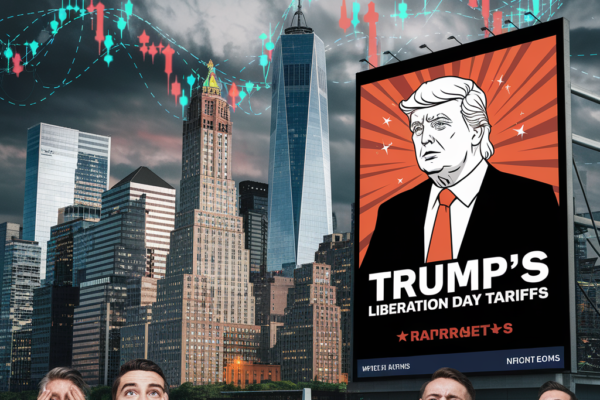In a defining moment for tech sector dealmaking, Amazon CEO Andy Jassy categorically denied pursuing TikTok’s U.S. operations during multiple April 2025 media appearances, quashing months of speculation about the e-commerce giant’s social media ambitions[1][2][5]. This decisive stance comes as TikTok parent ByteDance faces a revised April 30 deadline to finalize its U.S. divestiture under the Trump administration’s updated National Digital Security Act[12]. Jassy’s repeated refusals to engage with acquisition rumors – “We didn’t say we were a bidder for TikTok” became his mantra across CNBC interviews[2][9] – reveal calculated strategic restraint from a company sitting on $136 billion in liquidity[5].
The TikTok Divestiture Chessboard
Regulatory Timelines and Political Calculus
The extended April 30 deadline represents the fourth congressional reprieve since initial 2023 divestiture mandates, creating what Goldman Sachs analysts term “regulatory whiplash” in deal markets[12]. Trump’s latest intervention maintains pressure on ByteDance while allowing U.S. bidders more time to structure complex ownership frameworks that satisfy Committee on Foreign Investment in the United States (CFIUS) requirements. Treasury Department insiders suggest any viable bid must include: 1) Complete data localization through AWS GovCloud infrastructure 2) A U.S.-controlled board with security clearance vetting 3) Algorithmic transparency protocols meeting Defense Department standards[11].
Emerging Bidder Landscape
While Amazon remains on the sidelines, AppLovin’s $75 billion leveraged bid (backed by Silver Lake Partners) has gained traction through its “Clean Feed” proposal – a walled-garden version of TikTok’s recommendation algorithm independently audited by Palo Alto Networks[11]. Oracle’s renewed interest focuses on migrating TikTok’s 450 million North American user profiles to its Gen2 Cloud infrastructure, though antitrust concerns persist given its existing TikTok data hosting contracts[12]. Private equity firm Thoma Bravo recently entered discussions with Snap Inc. about a joint bid that would leverage Snap’s AR capabilities with TikTok’s creator ecosystem[11].
Amazon’s Strategic Calculus
Core Business Prioritization
Jassy’s reticence reflects Amazon’s intensified focus on margin expansion following 2024’s 23% AWS growth and 41% advertising revenue surge[5]. Internal memos leaked in Q1 2025 show the “Project Margin” initiative redirecting capital expenditures toward: 1) AI-powered fulfillment center automation 2) Prime Video’s ad-supported tier expansion 3) Alexa’s enterprise pivot with AWS integrations[5]. As Bain & Company’s tech practice lead notes: “At Amazon’s scale, even 50 basis points of margin improvement generates more absolute value than most acquisition targets – they’re playing a different financial game entirely[5].”
Social Commerce Alternatives
Rather than pursuing TikTok, Amazon is doubling down on its “Shorts & Stores” initiative – a TikTok Shop competitor integrated directly into Prime Video’s interface. Early tests show 33% higher conversion rates compared to standalone social commerce platforms, driven by one-click purchasing from shoppable video hotspots[8]. The company’s $1.2 billion acquisition of PopShop Live in late 2024 provided crucial livestream commerce infrastructure now being scaled across Prime Day 2025 preparations[8].
Broader Market Implications
Valuation Realities in Digital Media
TikTok’s evolving $225-275 billion valuation range (per Evercore ISI estimates) faces pressure from: 1) U.S. user growth plateauing at 170 million MAUs 2) Rising creator monetization costs 3) Meta’s Reels capturing 38% of short-form video ad spend[11]. This creates what Lazard’s TMT group calls “the personalization paradox” – platforms must balance algorithmic engagement with mounting content moderation expenses, particularly around AI-generated media[6].
Regulatory Precedent Setting
The TikTok saga establishes critical benchmarks for cross-border tech M&A, including: 1) CFIUS’s new “Algorithmic Stewardship” requirements 2) Mandatory data sovereignty escrow accounts 3) National Security Agreement (NSA) provisions for continuous monitoring[12]. These measures could add 12-18 months to future deals involving foreign-owned consumer tech assets, according to Freshfields Bruckhaus Deringer’s cybersecurity practice[11].
Leadership and Operational Considerations
Post-Acquisition Integration Challenges
Potential acquirers face monumental operational hurdles, illustrated by Microsoft’s abandoned 2023 bid due to: 1) Incompatible Azure-TikTok tech stacks 2) Cultural clashes in rapid content moderation scaling 3) Unresolved IP transfer restrictions on TikTok’s core algorithms[6]. Successful buyers must implement what McKinsey terms “hypergovernance” – real-time compliance dashboards tracking 400+ CFIUS-mandated metrics across data flows, talent management, and algorithmic outputs[11].
Talent Retention Dynamics
With TikTok’s U.S. workforce now exceeding 25,000, acquirers must navigate complex retention packages amid fierce competition for AI/ML engineers. Amazon’s decision to avoid this talent auction aligns with its “Build vs. Buy” AI roadmap, having quietly hired 3,000 machine learning specialists through its secretive Project Kuiper initiative[5].
Future Outlook and Strategic Alternatives
Amazon’s Path Forward
Rather than costly platform acquisitions, Amazon is betting on: 1) Generative AI tools for small business sellers 2) AR shopping experiences via updated Echo Show devices 3) Drone delivery integrations with Prime Video content[8]. Early trials of “Virtual Try-On Hauls” – combining TikTok-style videos with instant AR product visualization – show 28% higher average order values compared to traditional product pages[8].
TikTok’s Endgame Scenarios
Industry analysts outline three plausible outcomes: 1) CFIUS-approved sale to U.S.-led consortium (55% probability) 2) Managed shutdown with IP transfer to American licensee (30%) 3) Extended legal battles pushing resolution into 2026 (15%)[12]. The most likely path involves ByteDance retaining global operations while spinning off U.S. assets into a separate entity with golden share governance – a structure recently pioneered by Semiconductor Manufacturing International Corporation (SMIC) in its U.S. subsidiary[11].
Conclusion: The New M&A Playbook
Amazon’s TikTok rebuff exemplifies a broader corporate strategy shift toward “precision M&A” – highly targeted deals complementing organic capability building. As BCG’s 2025 Tech M&A Report notes, leading firms now evaluate targets through triple lenses: 1) Regulatory survivability (40% weighting) 2) Algorithmic portability (35%) 3) Cultural integrability (25%)[11]. For TikTok’s eventual acquirer, success will require not just financial heft but unprecedented public-private coordination in an era where national security and digital innovation are inextricably linked.
Sources
https://www.gurufocus.com/news/2771744/amazon-amzn-ceo-denies-interest-in-acquiring-tiktok-amzn-stock-news, https://markets.businessinsider.com/news/stocks/amazon-ceo-says-we-didn-t-say-we-were-a-bidder-for-tiktok-1034571502, https://seekingalpha.com/news/4430152-amazons-andy-jassy-clarifies-that-he-never-bid-for-tiktok-us, https://www.cbsnews.com/video/what-we-know-about-amazons-interest-in-tiktok/, https://www.gurufocus.com/news/2772137/amazon-amzn-ceo-denies-tiktok-acquisition-interest, https://en.wikipedia.org/wiki/YouTube, https://www.youtube.com/watch?v=fPslS_nkhdA, https://www.nexd.com/search/Video/feed/rss2/, https://www.gurufocus.com/news/2772619/amazon-ceo-sidesteps-tiktok-bid-question-cites-policy-against-ma-comments, https://www.b2d.ai, https://tribune.com.pk/story/2537661/amazon-is-reportedly-in-talks-to-acquire-tiktok, https://www.cnbctv18.com/technology/donald-trump-halts-tiktok-ban-giving-app-extra-time-to-find-a-buyer-19543660.htm





